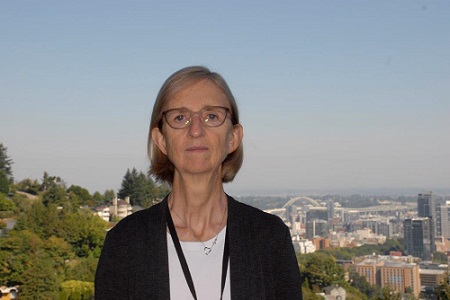Valerie Anderson

Research Focus: The focus of our laboratory is the changes in the fluid barriers that accompany brain aging and dementia. Using a combination of high field dynamic MR imaging and compartmental tissue models, we have examined the in vivo changes in blood-brain and blood-CSF barrier permeability that attend healthy aging and Alzheimer’s disease. Currently, we are using these and related techniques to probe the changes in vascular and metabolic properties of the barriers.
Biography: Valerie Anderson received her PhD from the Department of Chemistry at Georgetown University in 1982 studying reaction dynamics in non-homogeneous media. She pursued postdoctoral training at the Naval Research Laboratory in Washington, DC, and Portland State University. In 1992, she joined the Department of Neurological Surgery at OHSU, becoming Director of Clinical Research in 1995. In 2005, she obtained a Masters of Clinical Research and in 2009 began investigations of the brain’s fluid barriers.
Key Publications:
- Anderson VC, Li X, Doud A, Tagge IJ, Baker EM, Quinn JF, Kaye JA, Rooney WD. in Vivo measurement of water exchange at the human blood-cerebrospinal fluid barrier. Proc Int Soc Magn Reson Med 2017: 4560.
- Anderson VC, Obayashi JT, Kaye JA, Quinn JF, Berryhill P, Riccelli LP, Peterson D, Rooney WD. Longitudinal relaxographic imaging of white matter hyperintensitites in the elderly. Fluids Barriers CNS 2014, 11:24.
- Anderson VC, Lenar DP, Quinn JF. The blood brain barrier and microvascular water exchange in Alzheimer’s disease. Card Psych Neurol 2011, 2011, 615829.
- Anderson VC, Litvack ZN, Kaye JA. Magnetic resonance approaches to brain aging and Alzheimer’s disease associated neuropathology. Topics Magn Reson Imag, 2005, 16, 439-452.